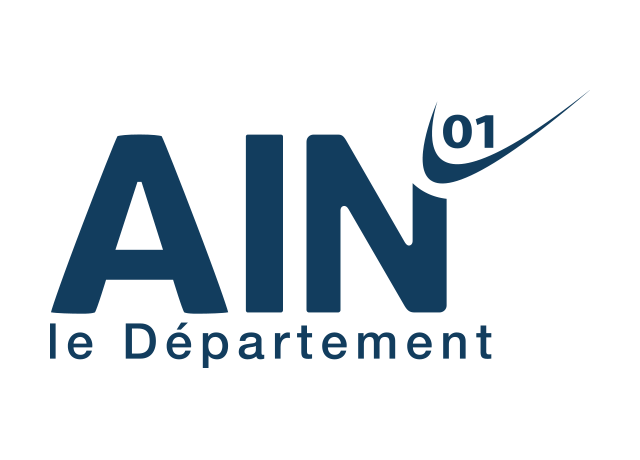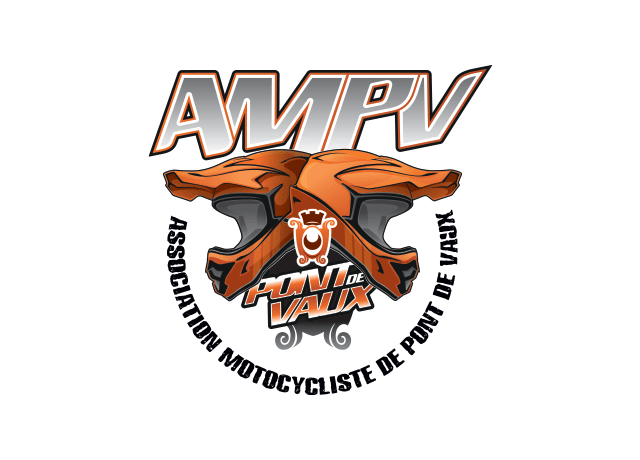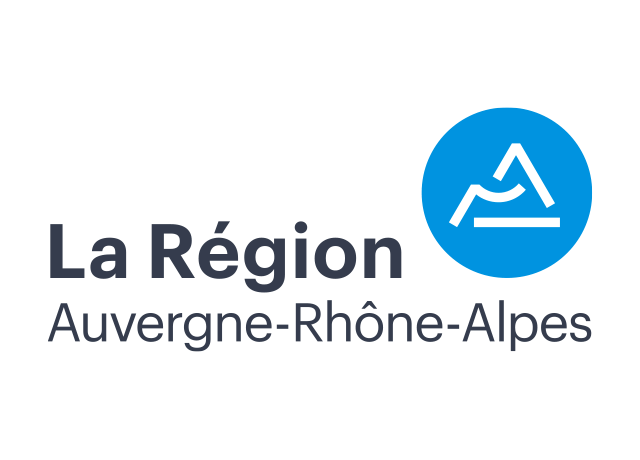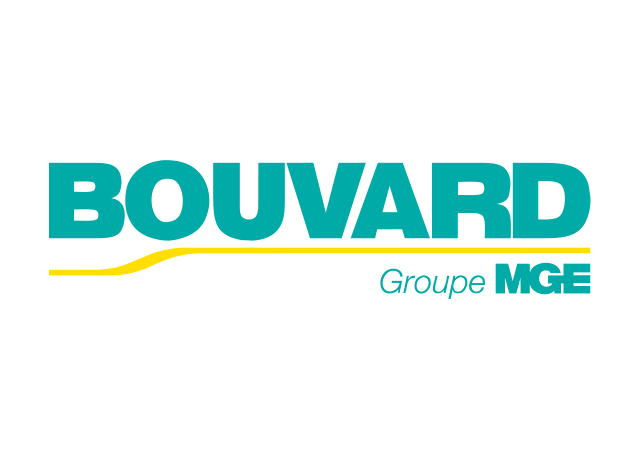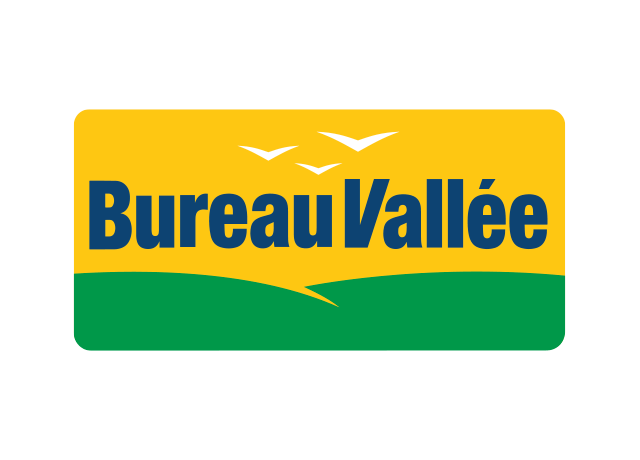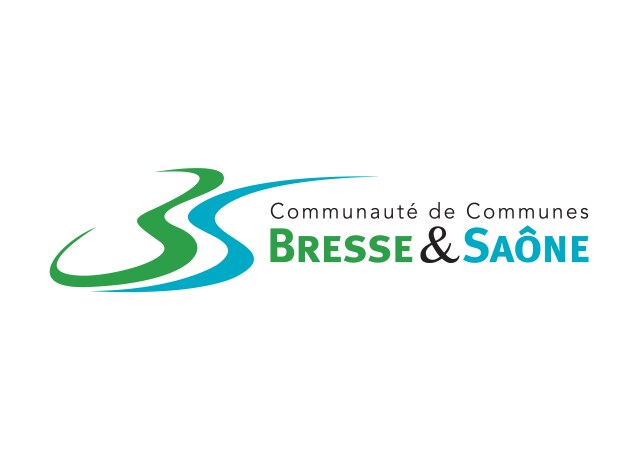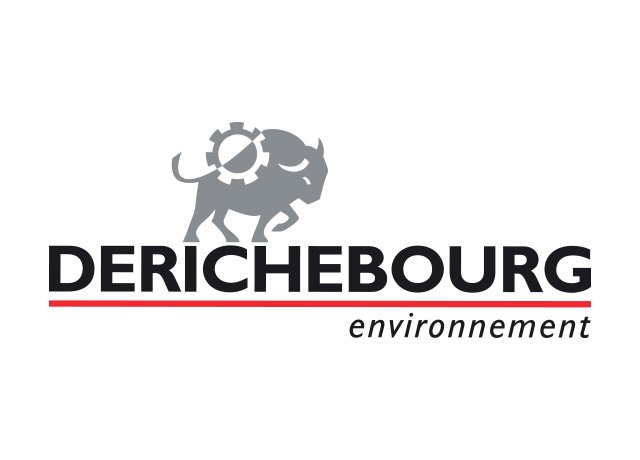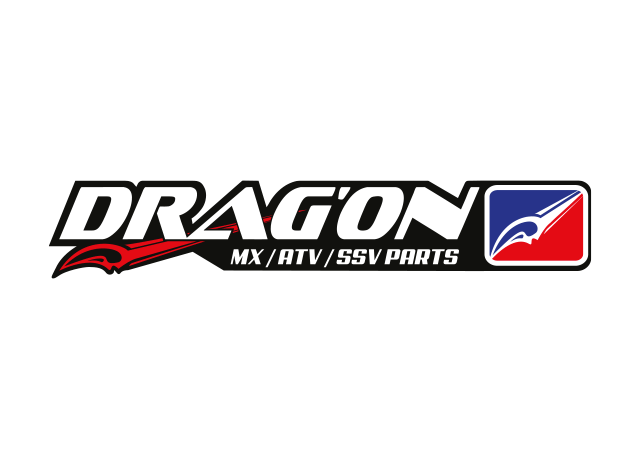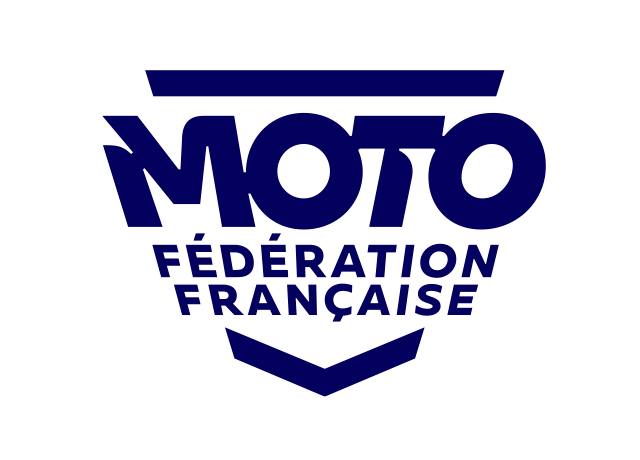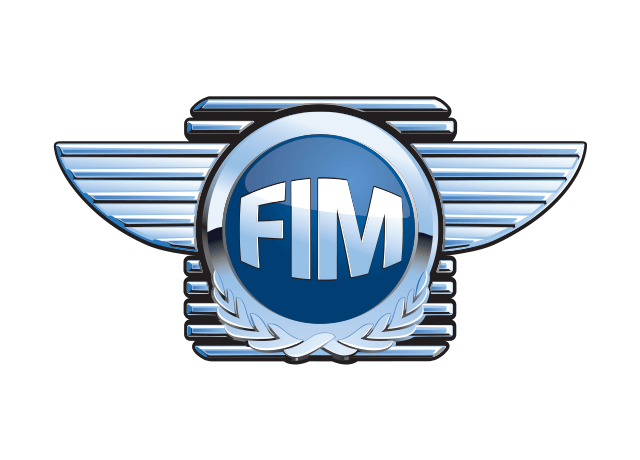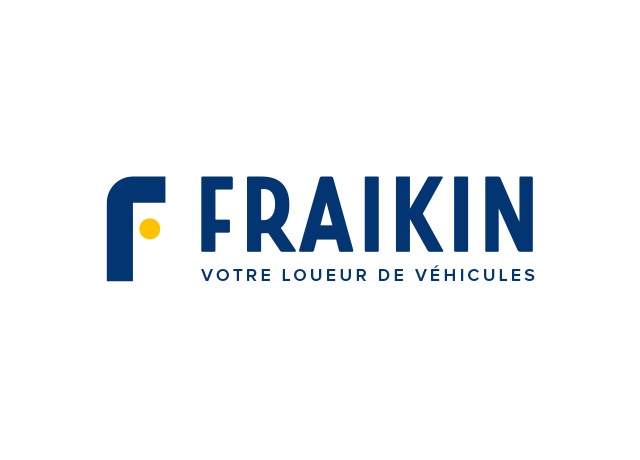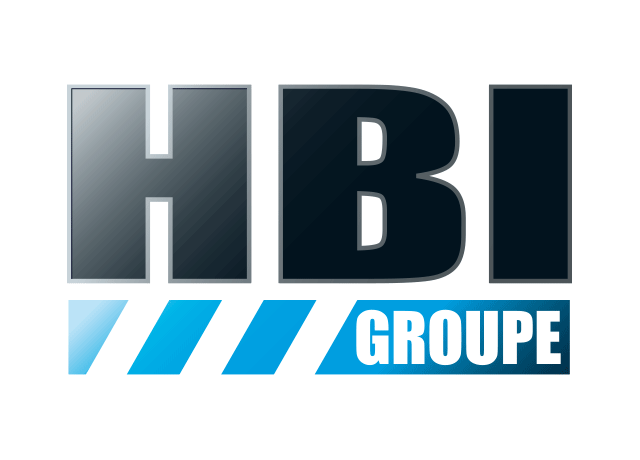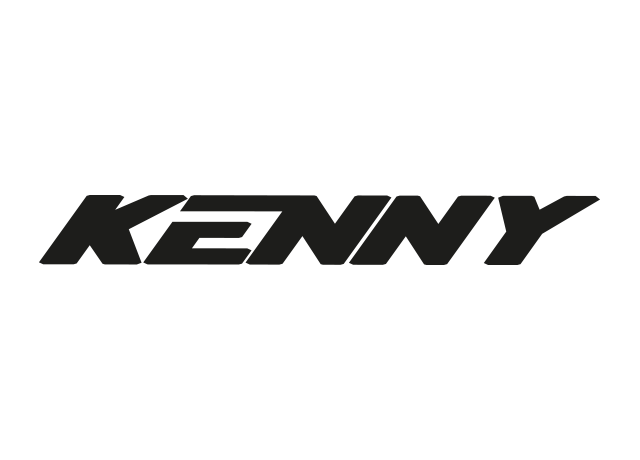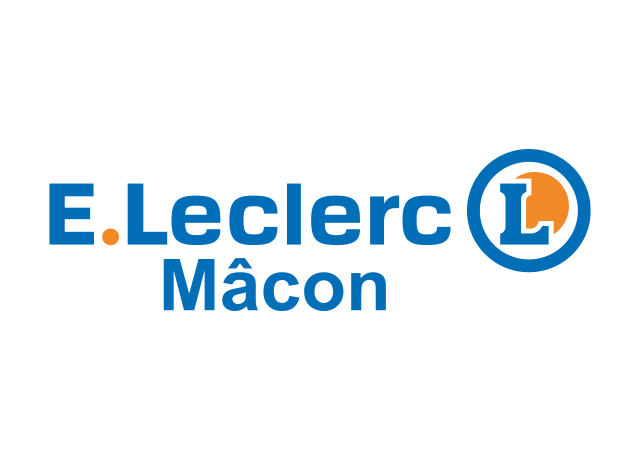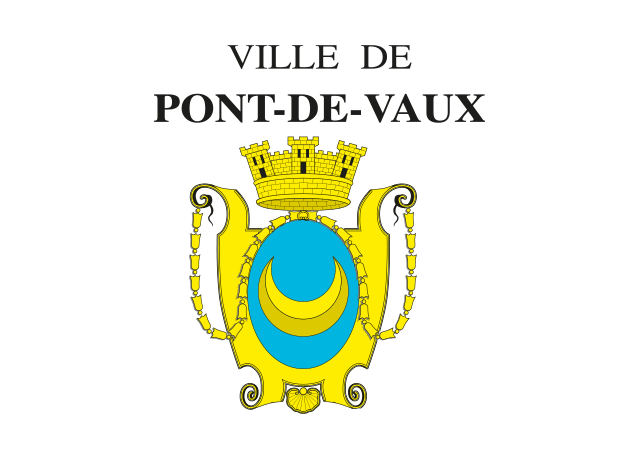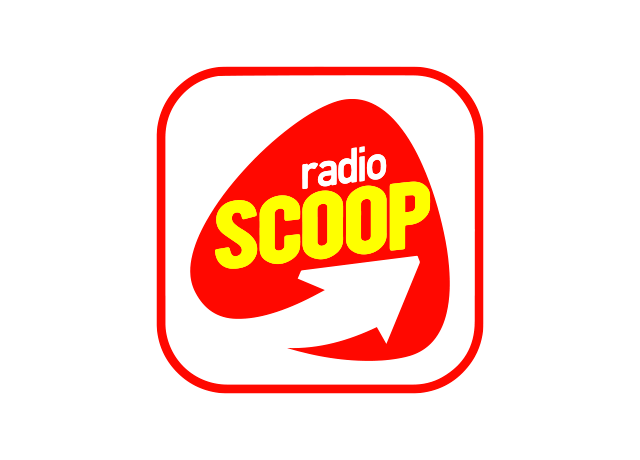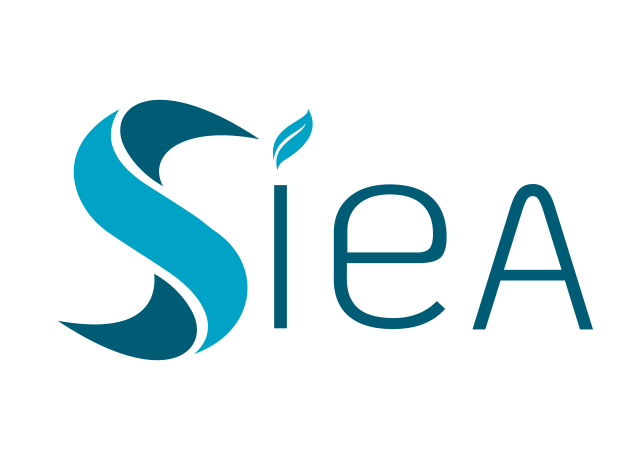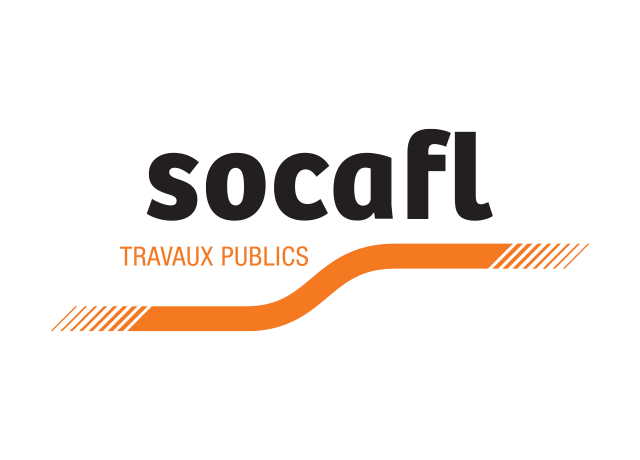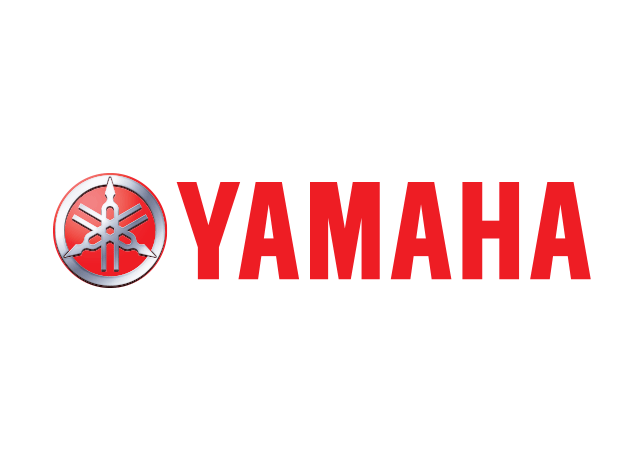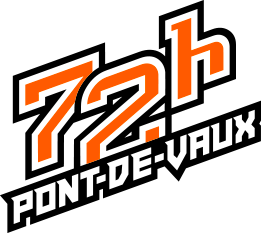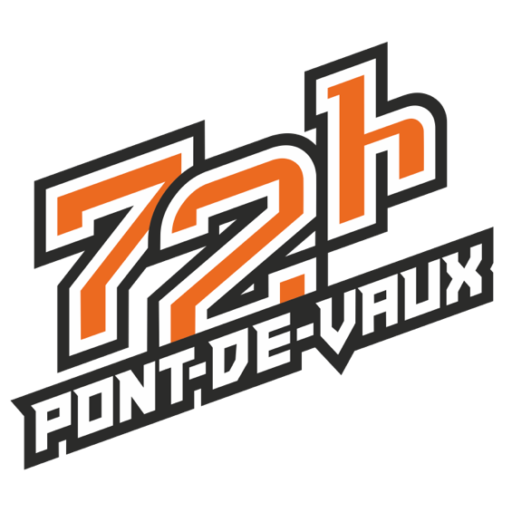MONDIAL 2025 regulations
Table of contents
Article 1 GENERAL
The Association Motocycliste de Pont-de-Vaux (A.M.P.V.), registered under number C3139, is organizing an off-road QUAD endurance event called :MONDIAL DU QUAD – 12 HEURES DE PONT-DE-VAUX.
Held over 3 rounds, it is run by teams of 2 or 3 riders with a single machine with a minimum cubic capacity of 240 cm3 and a maximum of 1000 cm3. This international event is registered on the FIM and FIM Europe calendars under number IMN 490/65, as well as on the FIM European calendar. F.F.M. n° 617This event is defined by the present Supplementary Regulations, the FFM Off-Road Endurance Safety Technical Rules and the F.I.M. Sporting Code. The circuit is approximately 4.1 kilometers long. The track is 8 to 12 metres wide. The maximum number of crews is limited to 117.
The MONDIAL DU QUAD – 12 HEURES DE PONT-DE-VAUX is an invitational event.
Article 2 REGISTRATION FEES (including race numbers)
ATTENTION : The first to register are the last to pass through the administrative and technical checks. In fact, the order of passage to the controls will be established according to the date of receipt of your entry form and payment of the fees, so the last to enter will be the first to pass. Registration is now exclusively online, on 72h-pontdevaux.com. You fill in your registration form according to the information you have on hand at the time, respecting all mandatory fields. Payment of your entry fee enables you to open your “registration” account and to complete or modify certain information at any time up to August 1, 2025 (except in cases of force majeure). Entries are limited to 117 crews. You can choose your race number between 1 and 117. For the first 30 numbers, the race number allocated corresponds to the place achieved the previous year, as far as possible. Your race number will be confirmed by the organizers, who will make the final decision.
Special launch offer 2025: €1100 inc. tax (one thousand one hundred euros) before January 8, 2025
- 1,250 (one thousand two hundred and fifty euros) until March 01, 2025
- 1450 € (one thousand four hundred and fifty euros) from March 02, 2025
| BANK NAME CIC PONT DE VAUX | BANK ADDRESS CIC PONT DE VAUX | ACCOUNT NAME AMPV |
| IBAN : FR76 1009 6181 7600 0147 5830 550 | SHIFT CODE/BIC CMCIFRPP |
Payment is due immediately. It is refundable in the event of non-selection (Confirmation1st half of July). In the event of withdrawal before the August1, 2025 deadline, entries will be reimbursed on the basis of 50% of the total amount. After this date, the entry fee will not be reimbursed. For bank transfers, a copy of the bank transfer request must be attached to the entry form. Any entry not accompanied by payment will not be taken into account and will not validate your entry. Should the event not take place due to force majeure, the organizers will not be held liable to competitors and entry fees will not be reimbursed.
Article 3 ADDITIONAL STANDS
ATTENTION In the event that the number of entries is not reached, crews may reserve an additional stand space, provided that they make a request at the time of registration, pay the entry fee and send a cheque for 360€ made payable to A. M.P.V.M.P.V 52 chemin des creuses – 01290 CROTTET – France, to be cashed on the day of the event. Additional stand spaces will be allocated by the organizer on a first-come, first-servedbasis.
Article 4 LICENCES
Only riders in possession of an F.F.M. license, valid national licenses from member countries of the European Union, LUE and F.I.M. zones, and “1-event LJA” licenses are admitted; the latter is limited to the number of places available or in the event of an incomplete grid. To obtain a “1-event” license, you must be in possession of a medical certificate less than 1 year old stating that you are not contraindicated in the practice of motorcycle sport in competition. The “1-event LJA” license forms can be downloaded from the FFM website National licenses from outside the EU zone must be regularized with an F.I.M. stamp and authorization to leave the country.
Article 5 SCHEDULE
(See complete timetable in Appendix 1) Download the WORLD SCHEDULE: 2025_WorldSchedule
Download the WORLD SCHEDULE: 2025_WorldSchedule
Article 6 MANAGING THE EVENT
(subject to change) TECHNICAL ORGANIZER / Maurice MAINGRET 252625 RACE DIRECTOR / DEPUTY RACE DIRECTORS/ Michel BERNARD 003604 / / Franck LEGRIS 179400 CHAIRMAN OF THE JURY / Paul ROCHE 142107 SPORTS COMMISSIONERS / Michel GAMBIN 010940/ Francis SKIERSKOWSKI 022388 ROAD MARSHALS / Track marshals, FFM, Auvergne Rhône-Alpes league and neighbouring clubs TECHNICAL COMMISSIONER / Christian SULPICE 022644 TIMING / AFC MicroArticle 7 SAFETY PROVISIONS
Animals (including guard dogs and other animals) are forbidden inside the circuit, in the pits, and in areas reserved for riders, mechanics, signalmen and representatives of the industry and the press. Smoking is strictly forbidden in the pits. A few “smoking” areas are marked out on the strip of land behind the south side of the taxiway.
Article 8 FLAGS
(See Appendix 2)Article 9 SUPPLIERS
The crew is made up of 2 or 3 drivers. No changes in crew composition may be made after August 1, 2025 , except in cases of force majeure. Competitors must be at least 15 years old on the date of the event. From the age of 15 and up to the age of 18, machine displacement is limited to a maximum of 550cc, 2t and 4t.
Article 10 ACCESS TO THE RACERS’ PARK AND STANDS
Applications for pit spaces will be accepted from May 15, 2025 to July 31, 2025 at the latest. Pit allocations will be confirmed by August 1, 2025 at the latest. Access to the paddock is authorized and controlled from Wednesday, August 20, 2025 at 08:00. Each crew has a fixed area of 4m x 18m (i.e. 72m²) between the pit-lane and the traffic lane, and a maximum of 2 “paddock” stickers depending on vehicle size for those authorized to park in the paddock. Vehicles bearing these stickers must park in their space without encroaching on the traffic lane, safety lanes or other spaces.
No parking is allowed on the traffic lane (which is also a two-way fire and emergency lane), under penalty of removal.
Unused trailers are parked in a special area defined by the organization. They remain the responsibility of the crews. No machines other than those approved for technical inspection may be parked in the parc coureur area. Other crew vehicles are parked in the first “P1” park (maximum 2 vehicles per crew with specific “P1” stickers issued at the parc coureurs reception desk). Additional “P1 vehicle” stickers can be purchased at the reception desk in the paddock. Floor-mounted structures may only be installed on the pit area itself, not overhanging the pit lane. Scaffolding-type installations extending from the pit wall are authorized only if they have been validated by an expert company (Apave, Socotec, etc.). These signage installations must not protrude onto the track or pit lane. Anyone wishing to access the pit-lane and/or signage area during the race must hold at least a “day driver assistant” license (€20 for the event), a sports license (NCO, etc.) or a manager’s license.
We would like to remind you that the organizing motorcycling association does not provide personal accident insurance cover for non-members of the organization in the pit area.
Competitors must comply with the environmental rules laid down by the organizer and provided for in the FFM regulations. A deposit of €50 will be required to clean the stand during administrative checks. This deposit will be reimbursed only at the end of the event; reimbursement will be made after verification of the state of cleanliness by an official of the organization.
Remember that smoking, barbecues, open fires and welding are strictly forbidden in the paddock.
Article 11 BADGES / BRACELETS
When you arrive at the reception desk in the parc coureur, the organization will hand over all the team badges or wristbands, the vehicle stickers and the numbered AV plate to the person designated (see entry form) to represent the team. Teams must provide a list of those present at the same time as the entry form. This list is necessary for the allocation of crew wristbands. It consists of : 1 pit boss, 3 drivers, 2 mechanics, 1 panel builder, 3 attendants, i.e. a total of 10 wristbands.
Children under 12 years of age must wear a “companion” wristband only. Children under 4 years of age are not allowed in the paddock, but only in the first “P1” park. Additional wristbands for accompanying persons may be purchased at the administrative checks, up to a limit of 3 per crew. Please note: once administrative checks have been completed, it will no longer be possible to purchase the 3 additional passes. However, they will continue to be on sale at the main entrance at the public rate. Wristbands and stickers are for crew or assistance only.
Article 12 PROTECTIVE EQUIPMENT AND CLOTHING FOR PARTICIPANTS
– Article 12-1 Clothing
During activities, riders must wear a complete crossman or endurist outfit in resistant material covering torso and arms, pants and gloves in resistant material and knee-high boots in leather or equivalent material.
– Item 12-2 Helmet
During activities, riders wear an approved helmet.
Helmets must be correctly fastened, properly adjusted and in good condition. It must be fitted with a chinstrap fastening system. All helmets must be marked with one of the following official international standards approval marks: FIM, Europe / ECE 22/05, ECE 22/06, Great Britain BSA and B, USA SNELL+2010 or Japan JLS.T8133 2007. No protruding objects, lights, cameras, etc. may be placed on the helmet. Cameras are strictly forbidden on helmets.
Helmets with an aerodynamic appendage (spoiler) are forbidden, except for those originally approved with this accessory. For eye protection, the use of goggles, safety glasses and disposable visors with a tear-off attachment or recuperator is authorized. Eye protection and goggles must be made of unbreakable safety material. Helmet visors must not be an integral part of the helmet.
Riders’ helmets must be fitted with compulsory self-adhesive retro-reflective surfaces of at least 5 cm² on the back and sides. Two retro-reflective armbands, supplied by the organizers, must be worn by riders during all night heats.
Article 13 MACHINE SPECIFICATIONS
The numbered AV plate in the organization’s colors (size 28×23 cm) must be fitted. The plate must be fitted on the front fairing and not on the front bumper. It is compulsory from the beginning to the end of the event. The rear plate is made of a flexible, non-rigid material (metal is forbidden for safety reasons). It must be positioned like the model below, with black numbers on a white background, legible for better tracking. These should be affixed to the left and right sides, so as to be visible from both sides (provide a white reflectorized adhesive background).

For the first 30 numbers, the race number allocated corresponds to the place achieved the previous year, as far as possible. The final allocation of race numbers is at the sole discretion of the organizers. The chain drive is fitted with a shoe or casing (must be present) at the bottom to protect the sprocket and disc. A rear bumper is fitted. In the case of a bumper, both ends must be rounded, with a minimum tube diameter of 15 mm. The overall width of the quad must not exceed 1300 mm.
Round nerf-bars without protruding parts are provided on each side of the quad. They feature straps attached to the front and rear of the footrest (see FFM Elite and AMA regulations) on the nerf-bar tube, designed to prevent the rider’s foot from accidentally touching the ground.
Handlebars must be fitted with a padded crossbar guard. Handlebars without a crossbar must be fitted with a padded guard in the middle of the handlebar, covering the handlebar flanges to a large extent. The exposed ends of the handlebars are plugged with a solid material, or covered with rubber.- Mandatory gearbox output segment.
- Chain protection segment mandatory.
- Maltese cross front bumper forbidden. No protruding parts accepted.
- Original chain and disc protection authorized
On-board cameras are for organization use only.
Studded tires are forbidden MONDIAL category : the single fuel tank has a maximum capacity of 22 liters. CROSS-COUNTRY category:
- 4×4 class: 4-wheel-drive quad with independent transmission, free fuel quantity.
- Class 4×2: 2-wheel-drive quads such as the Raptor, TRX 700 and Outlaw 525, with any amount of fuel on board.
VETERAN category: 37 years on January1, 2024. PDVRETRO category: 2t quads with a cubic capacity of over 240cc; examples of vehicles sought and accepted: HONDA TRX 250 to 500 cc quads – Yamaha Banshee 350cc and over – Kawasaki Tecate 4 – EML – RST – Suzuki LT 250/500 cc quadracer and quadzilla – VLS – EXY – STAR TRACK – 2-stroke proto having taken part in the 12 Hours.
Competitors are reminded that they are entirely responsible for their machines and equipment throughout the event. Under no circumstances may they invoke the civil liability of the organizing motorcycle association in the event of theft or damage.
Article 14 ADMINISTRATIVE AND TECHNICAL CONTROL
Administrative and technical inspections of crews will take place on the circuit on Thursday, August 21, 2025 from 8:00 a.m. to 7:00 p.m.– Article 14-1 ADMINISTRATIVE CONTROL
Drivers must present themselves at the administrative checkpoint at the time indicated on the entry confirmation. Any delay of more than 2 minutes will be penalized. Drivers must present themselves with :
- Confirmation of commitment
- Their license
- Their ID
- A deposit of 250€ in exchange for the transponder for electronic timing. The deposit is not refunded if the transponder is lost. A deposit of €50 is required for cleaning the stand, and for the chasubles and armbands provided by the organizers. This will be reimbursed at the end of the event, once the cleanliness of the premises and the equipment loaned have been checked by an official of the organization.
- Foreign pilots must also present an exit permit.
After administrative check-in, drivers must report immediately for technical inspection.
– Article 14-2 TECHNICAL CONTROL
The machines are clean and any paint marks from previous events have been removed. The front and rear lights are checked for correct operation, the circuit-breaker is in good working order and the front and rear plates have been installed. The machine frame is sealed and numbered. The presentation of the manual quick-fill system with valve is checked. The noise level according to current FIM and FFM standards is limited to 109 decibels at 2 m is checked. A deviation of 2Db from the value recorded at the time of the check is permitted. A maximum of 3 additional exhaust silencers may be checked and marked. A 6kg fire extinguisher of a model approved for hydrocarbon fires must be presented and marked.
Article 15 NIGHT EVENT
On the orders of the race director, the front and rear lights of the machines must be switched on for the duration of the night races, and riders must wear their retro-reflective armbands. The rear light must be red, non-flashing and perfectly visible (LED type recommended).
Article 16 PRESENTATION TO THE PUBLIC IN TOWN AREAS
After administrative and technical checks, convoys are organized to take riders and quads to the town for presentation. At the end of the technical inspection, the machines are parked under the responsibility of the pilots, waiting for the departure in convoy on order of the organizer, framed by vehicles of the organization. Any pilot who goes in town in quad by the road, except convoy, is sanctioned by the gendarmerie and by the organization. It is strictly forbidden to use non-approved quads in the Pont-de-Vaux urban area and on public roads.
All drivers must be present at the presentation on Thursday evening. They are dressed in racing gear and helmets. They take part in the presentation of the teams to the public on the podium in reverse number order from 5.30 pm to 10.00 pm. The 2-3 riders and their machines will be given a summons at the administrative check-in desk, stating the time at which they are to clock in and present themselves on the podium. In the event of failure to do so, the crew will not be allowed on the podium and will not be photographed. It is compulsory to wear a helmet when leaving the presentation podium until the quad is set up in the main street of the town center, and then the parade of quads before returning in convoy to the runners’ park, with one and only one person on the quad (the rider only). Participation in the parade after the public presentation and the return to the circuit must take place in the convoy set up by the organizers.
Article 17 BRIEFING
All drivers must attend the briefing. Attendance may be verified by drivers signing in. Venue and times are specified in the program (see Article 5 Program or Appendix 1 ).
Article 18 TRAFFIC
During the race, apart from the quad taking part in the race, the following are authorized to circulate– Article 18-1 IN THE RIDERS’ PARK / PADDOCK
People with badge/wristband – Vehicles with vignette.– Article 18-2 – IN THE STANDS
1 pit manager, 3 drivers, 2 mechanics, 1 panel builder. No vehicles, traffic is allowed on foot only.
– Article 18-2 – BEYOND PIT LANE, PIT LANE, SIGNAGE
Only those wearing the “pit-lane” chasuble and equipped with “driver”, “pitman” and “pit manager” wristbands are allowed access to this area. Traffic is allowed on foot only.
ATTENTION : For insurance reasons, the pilot bib can only be worn by pilots, it is not a chasuble.
Article 19 TESTS
Free and timed tests are scheduled (see schedule in Appendix 1). The use of a “mule” is strictly forbidden. Testing is carried out with the race machine presented at scrutineering.
Article 20 GRIDLING
Depending on the results of timed practice and under the orders of a steward, the drivers and their machines come from the pits to the starting grid 30 minutes before the start of heat 1. They line up in a herringbone formation along the barrier, facing the public, in the order of the numbers indicated on the starting grid. For heats 2 and 3, they leave the parc fermé one by one and line up in the same herringbone formation as for the first heat, the position being the same for all 3 heats.
ATTENTIONAccess to the track will be closed 20 minutes before the start of the first heat, or as soon as the parc fermé closes for heats 2 and 3. In this case, the quad will leave the pits after the start, under the orders of a marshal. Starts are given “LE MANS” style, with machines placed on the right-hand side of the track with the engine stopped, and riders wearing their circuit breaker (connected by a cord to the rider) on the left-hand side.
Assistance with the installation of circuit-breaker brackets (pin, plastic, match, etc.) is forbidden and penalised.
No mechanical intervention or refuelling of any kind is tolerated on the starting line during this pre-grid period. Only the starting driver and one driver or accompanying person wearing a race number are allowed in the starting area. All other crew members must remain behind the low wall separating the track from the pits, and are forbidden to stand on or straddle the wall.
Article 21 DEPARTURE
On the orders of the race director 10′ before the start time of each heat, the drivers position themselves along the low wall on the left-hand side, one heel glued to the wall. An official supervises the positioning of the latter and is in a position to note and establish a finding of fact which is sanctionable for failure to comply with the starting procedure (2′ penalty). The race director, positioned at the start line, directs the starting procedure. The start is given under the tricolour flag by the race director or a person designated under his responsibility, after passing the “30 seconds” sign and then the “5 seconds” sign. Quads that fail to start will receive assistance (from the rider with the authorized number in the start area) after the race director has given them authorization by means of the green flag.
In the event of heavy rain, the race director may decide to start the race under the “Safety-Car” system.
Article 22 PANELING
Only those wearing “pit-lane” chasuble and equipped with “driver”, “panelist” and “pit manager” wristbands are allowed access to the paneling area. Paneling is carried out from the low wall opposite the pit. It is forbidden to exceed the plumb line of the low wall. Wind blades or “flames” are moved if necessary.
Article 23 RACE FOLLOW-UP TV RADIO
You can follow the results on TV frequency 69 UHF/PAL, on the internet at 72-pontdevaux.com (live) and on the radio on channel 108 FM, streaming on the “72h de Pont-de-Vaux” Facebook page.
Article 24 STAND WAY
Speed along the entire length of the pit lane is limited to 20 km/h maximum. It is forbidden to stop on the pit lane, nor to obstruct it voluntarily. If the pit marshal forbids you to take the track, you must return to the pits via the specially designated lane, which joins the safety lane at the rear of the pits.
Article 25 CHANGE OF PILOT
All driver changes must take place in the pit area, off the deceleration track and with the engine stopped.
Article 26 SUPPLY AND ASSISTANCE AT THE STANDS
An environmental mat (FFM standard) and a 5-liter bucket of absorbent material, at your own expense, are mandatory in the refuelling and mechanics area. A 6 kg fire extinguisher (water extinguisher forbidden) must be permanently installed in the refuelling area.
The fuel used must be unleaded fuel normally sold on the market. Refuelling must be carried out in the pits, with the engine switched off, excluding any maintenance or mechanical operations, and with the rider no longer on the machine. Only rapid filling is permitted (mobile manual device with built-in valve, etc.). All “derrick” type installations (scaffolding with fuel tanks) are forbidden, as is filling with jerrycans or cans and funnels. This must be done with a team member wearing appropriate clothing and holding the fire extinguisher, ready to intervene, next to the feeder. The feeder must wear a cotton suit with long sleeves and legs, helmet with visor, goggles and gloves (Nomex-type overalls recommended). All parts except the frame can be replaced.
Mechanical work other than refuelling must be carried out in the pits and outside the refuelling zone. Welding is forbidden in the pits.– Article 26-1 – Fuel storage FUEL STORAGE
New regulations to be implemented in 2022 in response to SDIS (Service Départemental d’Incendie et de Secours) prerogatives to prevent fire risks, and also to meet Vigipirate plan specifications. There must never be more than 20 liters of fuel in stock in the pit area (at the pit- lane edge), not taking into account the filling of the quick-fill can and the refuelling of the tank at the start. Electric pumps are strictly forbidden for filling the derrick; only manual pumps are permitted. The remaining fuel required for the entire event, i.e. around 100 liters, must be stored at the rear of the stand, alongside the safety lane, in a 1mx1m area marked out by the organizers.
Storage in metal jerry cans (drums are forbidden) must be covered by a fire blanket fixed to the floor.
Each crew is responsible for securing its own fuel supplies, and each jerrycan must be indelibly marked with the crew’s race number. No jerrycans may be stored in the vehicles or trailers of crew members or those accompanying them. Failure to comply with this rule, which constitutes a serious breach of the event’s safety regulations, may result in the crew being penalized, up to and including exclusion in the event of a repeat offence. Smoking is strictly forbidden in the pits.
Article 27 DURING THE RACE
The rider, his machine and his transponder form an inseparable whole. Any change of machine is forbidden. The radio link with the pits is forbidden. Machines may be examined by the stewards at any time to ensure that no machine or marked part has been changed. A machine found to be too noisy must be brought into conformity. It will only be allowed to run the next round if the technical steward has confirmed that it is in compliance. Any change of muffler must be made with a muffler that has been checked and marked during the technical inspection. If the machine’s lighting system fails, even partially, front or rear, or does not comply with F.I.M. and F.F.M. technical standards, the rider must return to his pits within one lap to carry out repairs. Failure to do so will result in a penalty. He will not be allowed to resume the race until the quad’s lighting is in order. The compulsory circuit-breaker must be connected to the rider at all times when he is on his machine. Riders who are not wearing their race number, or whose number is detached, or whose name or official sponsor logo is obscured, must stop immediately in their pits to remedy the situation. Riders are protected by their clothing, and sleeves must cover the whole of their arms. At the end of the race, the stewards check that no irregularities have been committed.
Article 28 OFF-STAND ASSISTANCE
Any rider who finds himself immobilized on the track (engine stalled, etc…) must first evacuate his quad in order to clear it from the track. Makeshift and rapid repairs will be carried out on the edge of the track under the protection of a track marshal, by the rider only, provided that the machine is properly parked and presents no danger to the safety of all. All outside assistance, including mechanics, is forbidden. Mechanics, assistance or help is forbidden outside the pits. In the event of a total breakdown, at the request of the driver by calling the nearest track marshal’s post, the race direction will order the dispatch of an official towing quad. If this procedure is initiated, the crew will automatically be penalized. All other means of towing are strictly forbidden.
Article 29 NEUTRALISATION OF THE RACE, SAFETY-CAR
If an incident occurs during the race (weather conditions or any other cause) which jeopardizes safety and makes normal competition impossible, the race director may decide to neutralize the race under the “Safety-Car” regime by displaying the SC“Safety-Car” sign. In this case, a specially-marked vehicle equipped with orange flashing lights takes to the track from its position at the timing exit, travelling at moderate speed. The yellow flag is presented to the marshals’ posts, and riders catching up with the Safety-Car line up behind it in single file. It is forbidden to overtake the Safety-Car. For the duration of the neutralisation, an SC “Safety-Car” sign is placed after the timing exit to inform the riders. During the “Safety-Car” procedure, mechanical interventions and refuelling are authorized. The track may be resumed in accordance with the following procedure: the pit exit will remain open for 30 seconds after the Safety-Car has passed. When the Safety-Car is recalled by the Race Director, he will switch on a blue flashing light. Overtaking remains prohibited until the Safety-Car leaves the track to return to his post at the timing exit. Each lap completed during the Safety-Car’s intervention is counted as a race lap. If the race is brought to a halt by a red flag, the procedure is the same as for the finish of a heat: the pit lane is closed and all machines are placed in a closed park.
Article 30 CLOSED PARK
Immediately after the end of each of the first 2 heats, quads are placed in parc fermé. Only the rider wearing the race number has access to the closed park. No mechanical intervention or refuelling is allowed on the machines between the finish of one heat and the start of the next. On the order of the race director for heats 2 and 3, the parc fermé opens at the time indicated on the program (see schedule appendix 1). Riders resuming the next heat, equipped with their race numbers, come to collect their quads and place them on the starting grid. They leave the parc fermé one by one and take up position in a herringbone pattern, as for the first heat. The position is the same for all 3 heats.
ATTENTIONThe parc fermé closes 10 minutes after it opens. As soon as the parc fermé is closed, access to the track is forbidden; the latecomer takes his quad out of the parc fermé and parks it at the entrance to the pit lane, immobilized by a marshal and on the marshal’s orders, he may not start until all the competitors who have started the round have crossed the timing line. Machines that are stopped in the pits, for mechanical or other reasons, when the chequered flag is lowered on the 1st, and whose repair is in progress, are assigned a steward to take their machine and all its parts immediately to the parc fermé. All operations in progress are halted, including bench repairs. The steward accompanies one of the riders with his complete quad to the parc fermé. The quad leaves the parc fermé at the grid start and is parked at the entrance to the pit lane, immobilized by a steward. At the starting signal for the round, the crew can return to their pits. If a rider is injured during the last lap and is unable to bring his machine back to the parc fermé, one of the other two riders can go and get it, accompanied by a steward, and place it in the parc fermé. The parc fermé is guarded by security guards during the neutralization hours. It is strictly forbidden for anyone other than the riders to enter, and only at the time of arrivals and departures, under penalty of sanctions.
Article 31 ARRIVALS – END OF RACE
The finish is judged on the leading crew of the current round.
For all 3 heats, the finishers face the timing post and the chequered flag is waved at the timing chicane. After the chequered flag is lowered, all drivers slow down but do not stop. As soon as the flag is lowered, access to the pits is closed and refuelling is forbidden. For the first 2 heats, drivers remain in their respective positions and follow the race direction vehicle along the track (3/4 lap) to the parc fermé. For the 3rd heat, drivers remain in their respective positions and follow the race direction vehicle along the track (3/4 lap) to the regrouping area in front of the podium. Stopping on the pit straight is forbidden.Article 32 RANKING
The scratch ranking is established at the end of the last heat, based on the total number of laps completed in each heat. The team having completed the greatest number of laps, all heats combined, is declared the winner of the MONDIAL DU QUAD – 12 HEURES DE PONT-DE-VAUX. In the event of a tie in the number of laps, the ranking is based on the cumulative time of the 3 heats.
For the 3 heats, any crew crossing the finish line more than 10 minutes behind the leading crew will not have their last lap counted. Only quads crossing the finish line within 10 minutes of the chequered flag being lowered in the last heat will be classified.
Article 33 CLAIMS
Protests are lodged in accordance with the terms of the Sporting Code, article 510 and following. They are handed to the Race Director. All protests are admissible during the race and within a maximum period of 30 minutes after the standings for each round have been posted. After this time, they will no longer be accepted. Complaints relating to the ranking are received together with a fee of €75, refundable if the complaint is well-founded.
Article 34 PENALTIES
The event is a sporting race. Safety and sportsmanship dictate rules that must be understood and applied. If these rules are not followed, sanctions will be applied.
Any action likely to endanger the lives of others or safety will be sanctioned. The same applies to any insult or aggressive gesture towards the organization, a steward, another driver, a member of his team or another team. The sanctions taken by the jury in accordance with the sporting code may be: a warning, a reprimand, a time penalty, a fine not exceeding €450, downgrading, exclusion from the event, referral to the disciplinary body. See the list of penalties. The crew forms a cohesive group. In the event of any breach of the rules involving one or more members of a crew, or any behavior or conduct prejudicial to the smooth running of the event, the whole team will be considered responsible and may be excluded from the competition with immediate effect. Drivers are responsible for the behaviour of all members of their team.
Article 35 ADVERTISING
In accordance with law 91-32, all advertising for tobacco or alcohol is forbidden on the circuit.
- All advertising and promotional activities on the organization’s premises or around the circuit (stands, parks, track, village, etc.) must be approved in advance by the AMPV. All advertising and promotional displays in and on the stands are strictly forbidden, unless expressly agreed by the AMPV.
- The parks reserved for competitors, assistance and firms are made available to enable them to take part in the event in the most satisfactory technical conditions possible. They may not be used for advertising, commercial or public relations purposes without the prior agreement of the AMPV.
- All aerial advertising, promotional or public relations activities in the airspace above the circuit and surrounding municipalities are strictly forbidden without the prior written consent of the AMPV and other competent administrative authorities.
- Official race numbers must be worn and visible throughout the event, including official ceremonies (podium, finish press conference, etc.). The race number is included in the entry fee and will be retained by the driver after the race.However, for promotional and press purposes, drivers may have their jerseys flocked with elements of the official race number, in full compliance with the specifications provided by the AMPV regarding positioning, color and dimensions; however, the driver must wear the race number during practice and the races.
Article 36 INSURANCE
The organizer has taken out insurance. In the event of an accident, participants are responsible for ambulance transport from the 72 Hours of Pont de Vaux circuit to hospital.
For “one-event” licenses issued by the FFM, foreign riders who are not nationals of a member state of the European Union do not benefit from any coverage attached to this license. During administrative checks, you can take out additional bodily injury cover. If you refuse, we ask you to sign a liability waiver.
Article 37 APPLICATION OF THIS REGULATION
Failure to comply with these rules may result in a penalty.
Competitors agree to abide by the regulations and accept all clauses. Any points not covered by these regulations will be decided by the Jury, in accordance with the provisions of the reference texts . They also agree to abide by the decisions taken by the organizers and recognize as the sole sporting jurisdiction that established by the F.F.M. Sporting Code.
Article 38 ACCOMMODATION
Please contact the Pont-de-Vaux Tourist Office for a list of hotels, campsites and B&Bs: Tel : 00.33. (0)3.85.30.30.0 2 – Fax and answering machine: 00.33. (0)3.85.30.68.69
e-mail : contact@pontdevaux-tourisme.com http://www.bage-pontdevaux-tourisme.com
Article 39 PRICE LIST
SCRATCH 1st > €3,000 2 e > €2,000 3 e > €1,500 4 e > 800 € 5 e > €600 6 e > €400 7 e > €300 8 e > €200 9 e > €150 10 e > €120Article 40 LIST OF AWARDS
Best lap in race > Cup 1st – 2nd – 3rd Women 100% > Cut 1st – 2nd – 3rde young crew under 18 years of age 100%. > Cut 1st – 2nd – 3rde Aindinois (100% of the crew is licensed in the Ain) > Cut 1st – 2nd – 3rde Category Cross-country Class 4×4 > Cut 1st – 2nd – 3rde Category Cross-Country Class 4×2 > Cut 1st – 2nd – 3rde PDVRETRO category > Cut 1st – 2nd – 3rde > Veteran category > CutCALEB MOORE TROPHY: The Caleb Moore Trophy will be awarded to the youngest driver (on the race finish date of Sunday, August 24, 2025) who completes the 12-hour race. In addition to a trophy, he or she will also receive a KENNY outfit (jersey, pants and gloves). Valued at €500 (this prize cannot be exchanged or modified and cannot be the subject of any financial consideration). Participation in the trophy is automatic.
Article 41 ISTEMS OF PENALTIES
These penalties may be increased by decision of the jury (serious misconduct, repeat offence).- Circuit-breaker not plugged in at the start or not working or assistance > Penalty 3 laps to exclusion
- Any insult or aggressive gesture towards the organization, a steward, another driver, a member of his team or another team. > Penalty: €100 + 3′ penalty to exclusion
- Fraudulent use of badges and non-compliance with badge allocation conditions, fraudulent use of vehicle sticker > Penalty: €100 + 2′ penalty to exclusion
- Refuelling or mechanics between rounds > Penalty: 2′ penalty to exclusion
- Unauthorized use of mini-motorbikes or other equipment within the circuit enclosure > Penalty: 2′ penalty to exclusion
- External assistance outside the pit (e.g. changing glasses) > Penalty: 2′ penalty to exclusion
- Exceeding current noise standards (112Db at the end of the race) ) > Penalty: 2′ penalty to exclusion
- Return to the pits by official tow > Penalty: 6′ penalty
- More than 2 minutes delay at the administrative checkpoint > Penalty: 2′ penalty
- Mechanic or attendant in the start area > Penalty: 2′ penalty
- Non-compliance with safety or other instructions in the pits (welding, smoking, etc…), pit-lane, signs, etc. > Penalty: 2′ penalty
- Non-compliance with fuel management procedures: Maximum stock in pit exceeded, absence of metal jerry can in storage area, fuel storage in team vehicles and trailers. > Penalty: Penalty to exclusion
- Engine not stopped in pit during refuelling > Penalty: 2′ penalty
- Excessive speed in the pits >20 km/h > Penalty: 2′ penalty
- Early start > Penalty: 2′ penalty
- Passing a competitor under the yellow flag > Penalty: 2′ penalty
- Passing a competitor under “Safety-Car” conditions > Penalty: 2′ penalty
- Cutting the circuit > Penalty: 6′ to exclusion
- Reverse direction on circuit or in pits > Penalty: 6′ to exclusion,
Appendix 2 FLAGS

